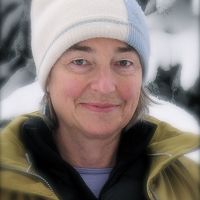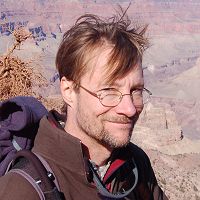Anderson et al., 2013
Boulder Creek CZO II: Evolution, Form, Function, and Future of the Critical Zone
Anderson, R., Anderson, S., Molotch, N., Rajaram, H., Tucker, G. (2013)
Submitted to NSF Solicitation NSF 12-575
-
Boulder, INVESTIGATOR
-
Boulder, INVESTIGATOR
-
Boulder, Sierra, INVESTIGATOR
-
Boulder, INVESTIGATOR
-
Boulder, INVESTIGATOR
Plain English Summary
Overview:
BcCZO-II aims to understand how critical zone (CZ) architecture evolves over time, how it conditions hydrologic and biogeochemical response and ecosystem structure, and how it will respond to future changes in climate. Objectives are: 1) Document CZ evolution in the Colorado Front Range, where climate has been the major driver for the last 40 Myr; this entails determining rates of exhumation of the range and its adjacent basin, and documenting the structure of the CZ at key sites across the range. 2) Understand how weathering, transport, and biological processes shape the CZ (process to form). 3) Discover how CZ architecture governs the storage and flow of water, nutrients and sediments (form to function). 4) Explore CZ functional response to near-future changes in temperature and precipitation, and associated changes in ecosystem and fire regime. 5) Communicate findings through talks, papers, K-12 education, undergraduate classes and research, and simulations based on process models that capture CZ dynamics. Methods include: 1) monitoring weather and water in selected sites across the Boulder Creek watershed, 2) sampling rock, soil, vegetation, and water for physical, chemical, and genetic data, 3) collecting cores, geophysical data and outcrop descriptions of CZ structure, 4) constructing conceptual and numerical models to quantify CZ evolution in past climates, and present-day and future CZ functioning.
Intellectual Merit :
The central aim of BcCZO is to develop a deeper understanding of the structure, functioning, and evolution of the critical zone in a mountainous landscape. This understanding is required to answer fundamental questions in earth and environmental science, such as: How does rock turn to sediment? How do landscapes evolve? What controls hydrologic and biogeochemical fluxes and ecosystem services? The Colorado Front Range provides an ideal natural laboratory for exploring these questions, as the results from BcCZO-I have shown; it typifies mountainous landscapes of the American West that support large human populations. Mountain CZs have been shaped by a complex climatic history, leaving a long legacy. The juxtaposition of hard crystalline rock of the mountains against soft shale of the Plains, each with a different biota, forces acknowledgement of the roles of rock type and of both biogeomorphic and biogeochemical feedbacks in the evolution of the CZ.
The transformative nature of the program lies in its integrative and interdisciplinary approach. The BcCZO-II project brings together a diverse team of ecologists, hydrologists, geomorphologists and geochemists from CU, USGS, and Colorado School of Mines, knit by major threads that include snowmelt, subsurface flow, multiple roles of biota, emergence of long-term climate legacies, and numerical models that cross disciplinary boundaries. Weather and fire events have driven perturbations in water, sediment, and solute export from the mountains that are being monitored, and that stimulate modeling efforts that include projection into a warming climate. Research on snow, the geobiology of deep weathering, the roles of slope aspect, and the use of cosmogenic radionuclides connects BcCZO to other CZOs.
Broader Impacts :
Beyond training researchers in interdisciplinary science, the impact of BcCZO will be extended through five related activities:
- Engagement of the CU Science Discovery program. CZ science will be delivered to secondary students and teachers in Colorado through a Field Course for Colorado Teachers, Mountain Research Experience for high school students, and traveling BcCZO School and Community programs. A graduate CZO Science Discovery Outreach Fellow will benefit from working with Science Discovery education professionals.
- Engagement of underrepresented minority students in research. A REU program to be proposed will serve students recruited from three historically black universities and from CU. The BcCZO faculty, CZO REU Fellow and graduate students will provide a three-week course combining classroom and field research experiences.
- Educational simulations. The BcCZSim Fellow will transform CZ models into interactive simulations, each tested by Science Discovery students and teachers, and contributed to the Science Education Resource Center(SERC).
- Future-casting hydrologic and ecosystem states to 2050. This will contribute to water and environmental management policy. 5) Cross-CZO integration. Cyberseminar series, CZNetwork workshops, joint modeling and field efforts, and the Drill-the-Ridge program will strengthen the CZ community.
Citation
Anderson, R., Anderson, S., Molotch, N., Rajaram, H., Tucker, G. (2013): Boulder Creek CZO II: Evolution, Form, Function, and Future of the Critical Zone. Submitted to NSF Solicitation NSF 12-575.
 This Paper/Book acknowledges NSF CZO grant support.
This Paper/Book acknowledges NSF CZO grant support.
Explore Further





